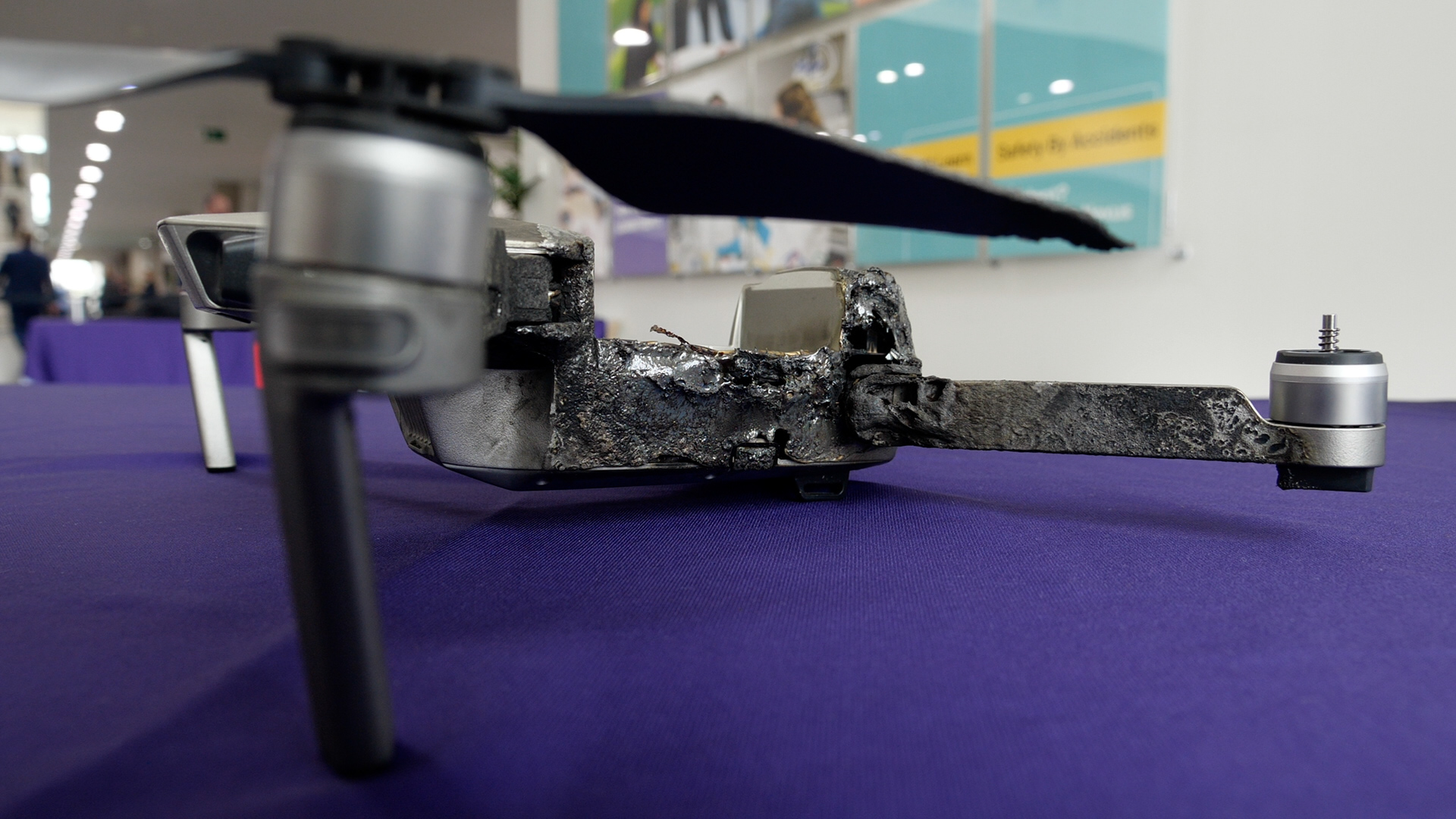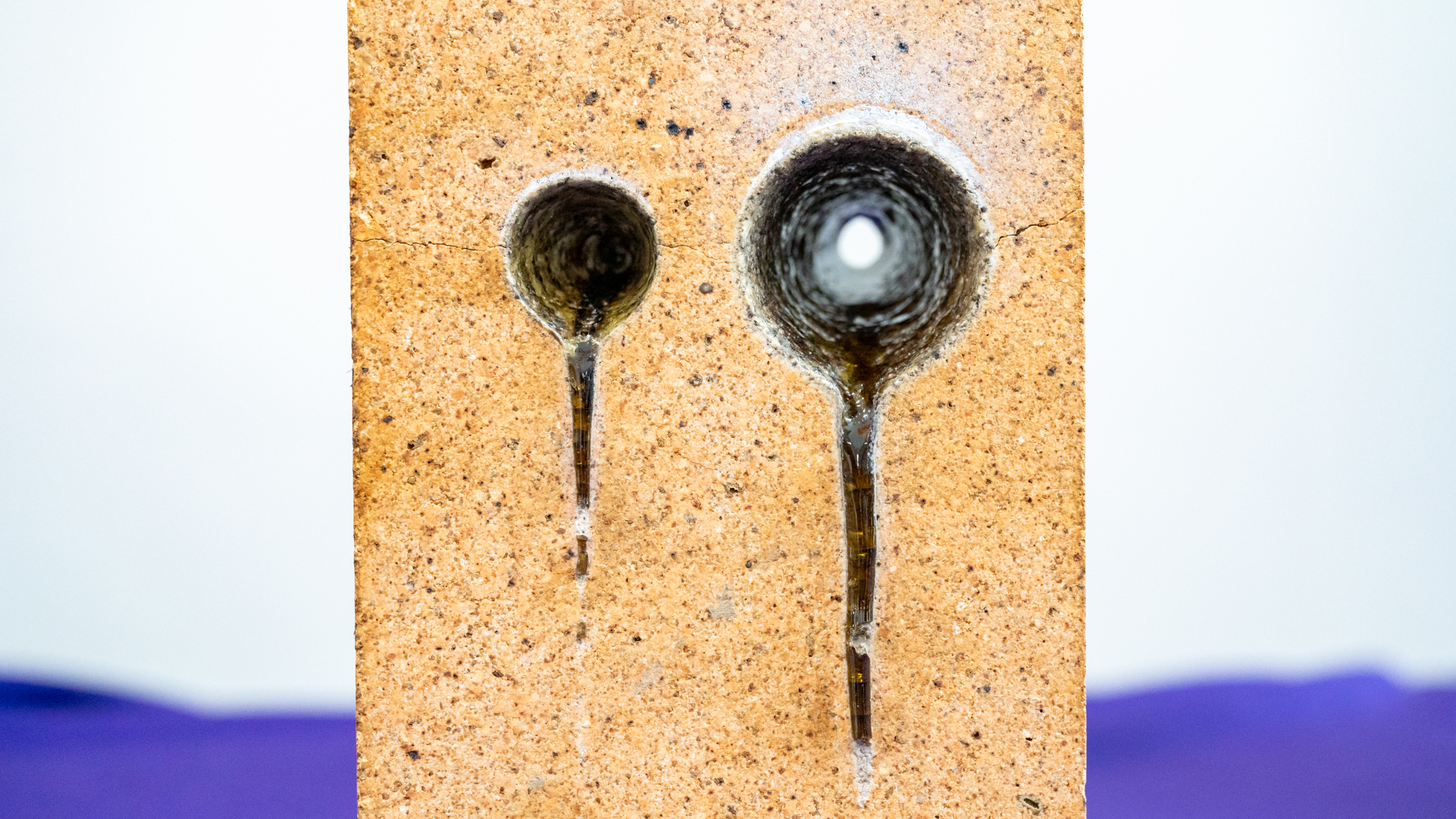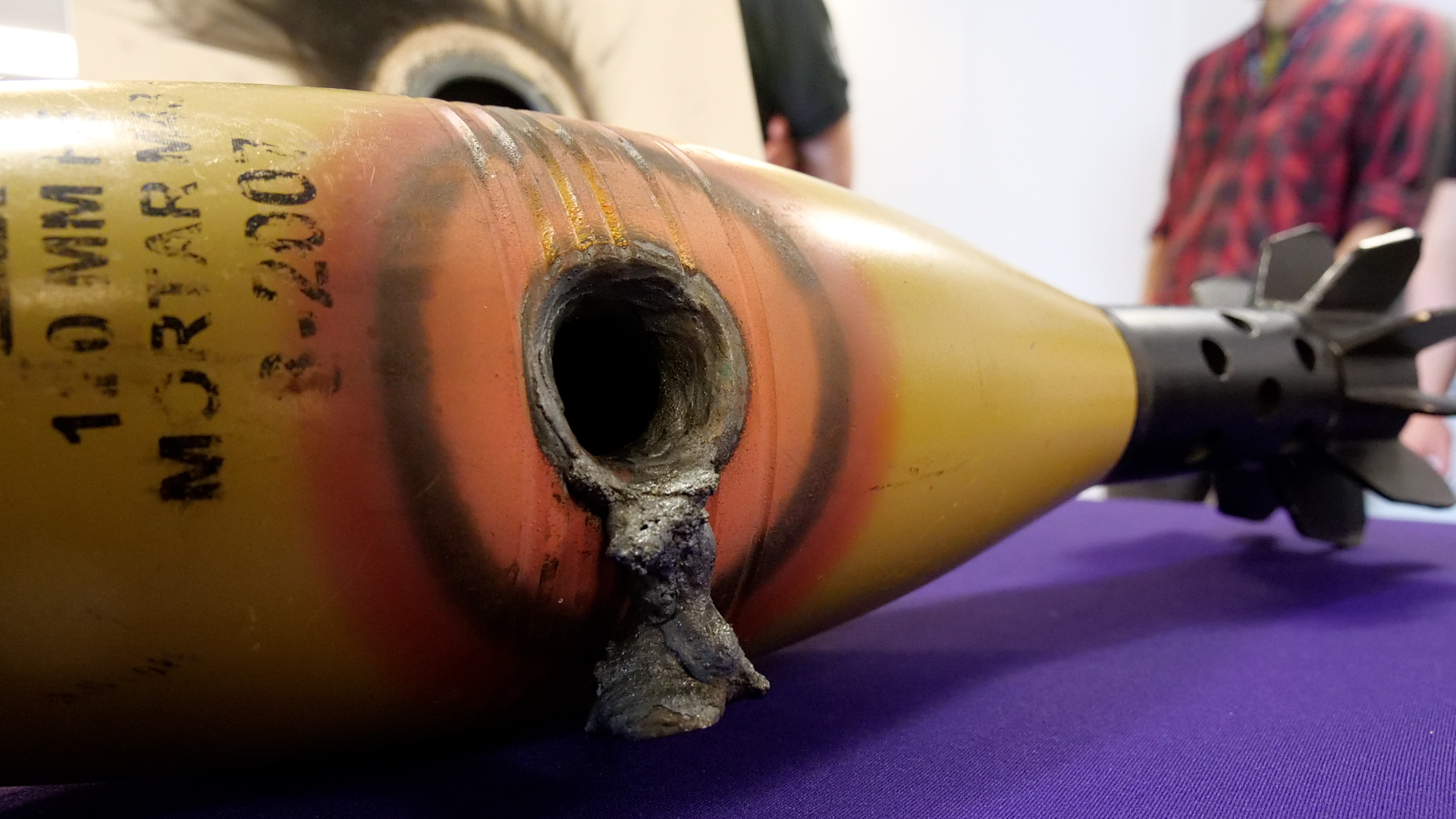New footage shows how DragonFire laser can melt away threat posed by enemy drones
Previously unseen footage of the Royal Navy's new laser weapon in action gives an insight into how it could be used to take down and destroy threats like drones.
DragonFire is expected to be ready for deployment by 2027 at the latest, and Defence Secretary Grant Shapps has suggested it could be rushed to the frontline in Ukraine to take down Russian drones.
Test footage released by the Defence Science and Technology Laboratory (Dstl) shows what happens when the new weapon system targets a drone.
As the drone enters DragonFire's crosshairs, the laser is fired, setting the drone's engines on fire and sending it plummeting to the ground within a matter of seconds.
In the video, bright flames and smoke can be seen rising from the UAV just before it falls.
During a visit to the Porton Down military lab in Salisbury, Forces News got to see what remained of a drone after facing DragonFire.

It had been left badly scorched and melted as a result of DragonFire, with clear cracks visible in its shell.
Other items that faced the fury of DragonFire were shown by Dstl at Porton Down, with a mortar bomb facing a similar fate to the drone.

The casing of a 120mm mortar round was turned to molten metal, leaving a clearly visible hole.
While DragonFire is unable to take out a mortar bomb in flight, the test does show the power of the laser.
Sheets of steel were also burned through by the powerful laser as was a fire brick which is specifically designed to withstand extremely high temperatures.

Laser-directed energy weapons like DragonFire use an intense light beam to cut through their target and can strike at the speed of light.
Chris Allam, the managing director of MBDA UK which is one of the firms behind DragonFire, told Forces News the weapon was a game changer, offering a "revolutionary step in terms of capability".
At just £10 a shot, DragonFire is unlikely to burn a large hole in the Ministry of Defence's pocket, with the system set to offer a cheaper alternative to missiles when carrying out tasks like shooting down attack drones.

DragonFire is set to be operational five years than earlier planned, and the Defence Secretary suggested it could also be used on land as he looks to see if the pace of project can be increased even further.
"I've come down to speed up the production of the DragonFire laser system because I think given that there’s two big conflicts on, one sea-based, one in Europe, this could have huge ramifications to have a weapon capable particularly of taking down drones," Mr Shapps said.
"And so what I want to do is speed up what would usually be a very lengthy development procurement process, possibly up to 10 years, based on my conversations this morning, to a much shorter timeframe to get it deployed, potentially on ships, incoming drones, and potentially on land.
"Again, incoming drones, but it doesn’t take much imagination see how that could be helpful in Ukraine for example."









